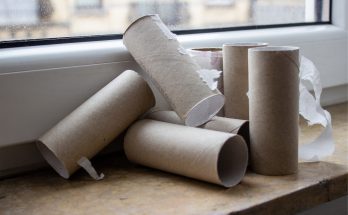After being stuck at home this past year, you may find a solid dose of spring cleaning and major decluttering, reorganizing, and redecorating is becoming a necessity. But there can often be a major sticking point when you try to let go of certain things, and it may not be clear why you are having trouble.
When you encounter an item you know in your heart you don’t actually need and the thing is taking up space without fulfilling a purpose or ever being used, looked at, or enjoyed, it’s more than likely time to part with it. But when that item holds a sentimental attachment, the psychological urge to keep it becomes stronger and stronger. So if you can’t give the item to a real, genuine purpose again, here’s what Psychotherapist Haley Neidich, LCSW, recommends.
Why We Get Attached to “Things”
According to Neidich, “Folks who struggle with this [issue] are typically reflecting their own feelings onto the object, assigning a sense of safety to the presence of the object as a coping mechanism for avoiding dealing with their anxious feelings or past trauma.” In other words, that item is becoming a support system for you because you are attaching extra meaning to it.
It’s normal for all of us to be attached to a few genuinely sentimental items: perhaps a blanket your grandma knitted before passing, art your child made, or something gifted by a loved one or best friend. While it’s normal to have attachment to an item here or there Neidich cautions it can get out of hand.
“In severe cases where this behavior is persistent and goes unchecked, folks can experience hoarding disorder behavior, wherein their home becomes cluttered with these objects. Clutter can significantly impact one’s mental health overall, and working towards slowly decluttering your space is an important part of mental health treatment.”
Tips and Tricks for Letting Go
First thing’s first: “anyone who believes they may have hoarding disorder should actually not begin to declutter their home unless they are in active treatment with a psychotherapit,” says Neidich. Starting the process without professional support can be worse than doing nothing at all.
But for those who are just having standard attachments to some items they struggle to part with, she recommends these steps for making it easier:
● Have a loved one who feels safe and non-judgmental be around for the decluttering to help you make decisions, stay organized, and stick to your system.
● Start slowly; for example, with one drawer at a time. This can alleviate anxiety and takes the pressure off of trying to do an entire room or house at once.
● Ask yourself questions. If you’re stuck on an item, ask why it’s so sentimental or connected to you. If you can’t think of the reason, this may free yourself to part with it more easily.
● Sentimentality is not a bad thing, in fact it’s lovely and normal. If you’re not ready to part with everything, let yourself hold onto 2-3 sentimental items per room that are “extra” beyond what you technically need and use on a regular basis. Try to then declutter some of the other items that are less necessary or sentimental. Knowing it doesn’t have to be all or nothing makes it easier to be more assertive in decluttering.
● Overall, pay attention to your emotions and anxiety throughout the process. Notice what feels good and freeing and what causes negative emotions. Have a loved one or therapist you can check in with if letting go of attachment items is very tough.
● Remember that “decluttering is the healthiest thing for your mental health and trust in the process of slowly taking care of that for yourself, as it is a very loving choice to make.”
Ultimately, take your time, remember that having a psychological attachment to an item isn’t a bad thing, and that going through the process slowly will lead to better results.



